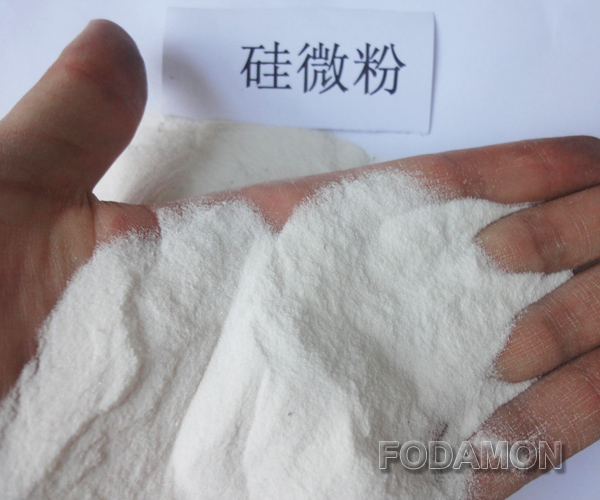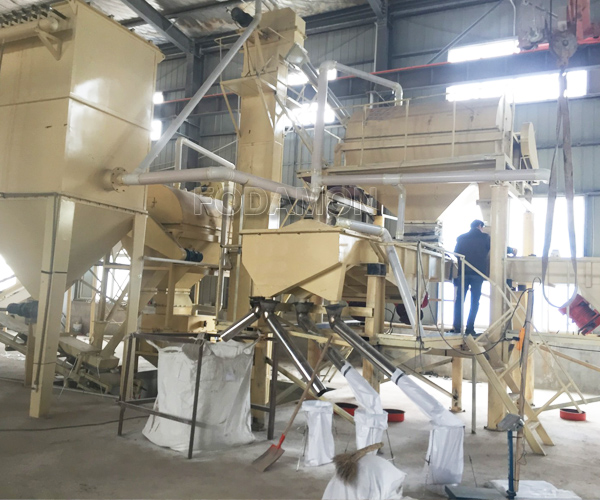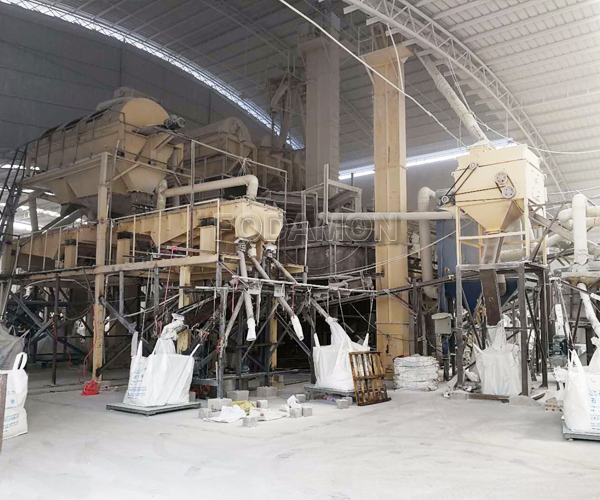The color of pure quartz sand is generally white, opaque or semi transparent or transparent, but we will also see black impurities other than quartz in quartz sand. These black impurities cannot be completely removed in the pickling process of quartz sand. If there are too many black impurities, the quality of finished quartz sand will be affected. Some quartz sand processing plants will use color separators to remove black impurities.

01. What is black impurity?
The black impurities in the quartz sand may come from the residual mechanical iron after the quartz sand is broken by the crusher, carbonization impurities and the associated biotite and tourmaline in the quartz ore.
(1) Mechanical iron: the so-called mechanical iron refers to the uncertain content of foreign iron mixed in semi-finished products during the beneficiation and crushing of quartz sand.
(2) Carbonization impurities: carbonization impurities are accidentally mixed in the process of quartz ore mining or processing, such as the surrounding of the storage yard is not cleaned, weeds, debris or dust are mixed into the quartz ore stockpile. After pickling and other treatment, many of these impurities have been removed through washing and other links, and the remaining impurities generally appear black.
(3) Mica group minerals: biotite is one of the associated minerals of quartz ore. due to different material components contained in mica, it will show different colors. Common colors include reddish brown, dark brown and even black. During pickling, it cannot be completely dissolved and decolorized by acid solution, and part of biotite remains in quartz sand. Therefore, we can see black mica impurities in quartz sand.
(4) Tourmaline group minerals: tourmaline is one of the associated minerals of quartz ore. tourmaline is a silicate mineral formed after weathering, which is acid and alkali resistant, weak magnetic or non-magnetic. The color of tourmaline varies with different cationic components, often black, rose, dark blue, dark green, etc. It cannot be completely dissolved by acid during pickling. If it is black tourmaline, it will appear as black impurities in quartz sand.

02. Source of black impurities?
There are two main sources of black impurities in quartz sand, one is the companion of quartz ore, and the other is the black impurities mixed from the outside.
(1) Minerals of quartz ore itself: the accompanying organisms of quartz ore itself are mainly mica minerals and tourmaline minerals introduced above. The minerals are connected with quartz ore through weathering and other factors.
(2) Mixed black impurities: mechanical iron comes from beneficiation equipment and auxiliary equipment. In beneficiation equipment, mechanical iron mainly comes from crusher grinding equipment, especially grinding equipment. The iron in these equipment is mainly from the normal wear and tear of the equipment in beneficiation and the iron produced by the oxidation of the equipment itself; Iron in auxiliary equipment is mainly caused by oxidation and corrosion of equipment.
In addition, carbonized impurities are also accidentally mixed in during quartz ore processing.

03. Effect of black impurities on the quality of quartz sand?
(1) Influence of mechanical iron on the quality of quartz sand: if there is too much mechanical iron in quartz sand, the residual mechanical iron will oxidize in the drainage process or drying process after pickling, resulting in yellowing of quartz sand; It will consume more effective substances of acid in the pickling process, affect the recycling effect of subsequent recovered acid, and cause the waste of acid solution.
(2) Impact of other black impurities on the quality of quartz sand: if the black impurities in quartz sand cannot be completely removed by pickling, too many black impurities in quartz sand after pickling will affect the overall quality of quartz sand, reduce the sales price of quartz sand and increase the subsequent processing cost.
Quartz sand enterprises want to control black impurities within a certain range. There are two general practices in the industry:
Firstly, the raw materials of quartz sand are controlled. For example, quartz sand mining enterprises carry out flotation and magnetic separation to remove most black impurities. Flotation can remove mica, feldspar and iron mineral impurities in quartz sand; Magnetic separation can effectively remove a large amount of mechanical iron.
At the same time, quartz sand enterprises should control the mixing of black impurities in the process of quartz sand processing, and the black impurities that cannot be completely removed by pickling need to be removed by color separator.
